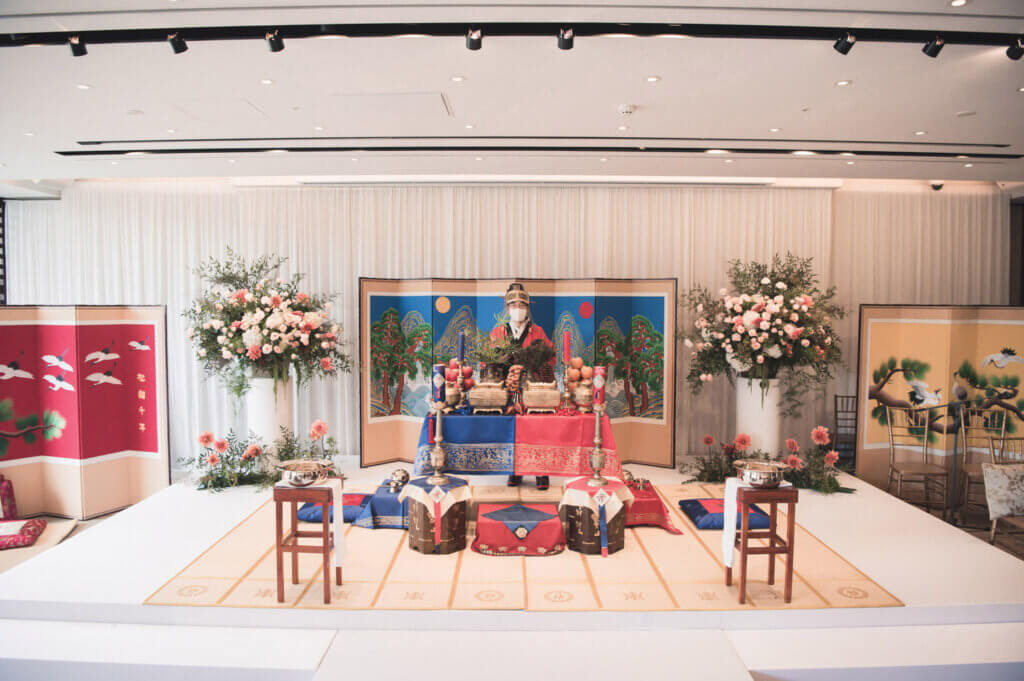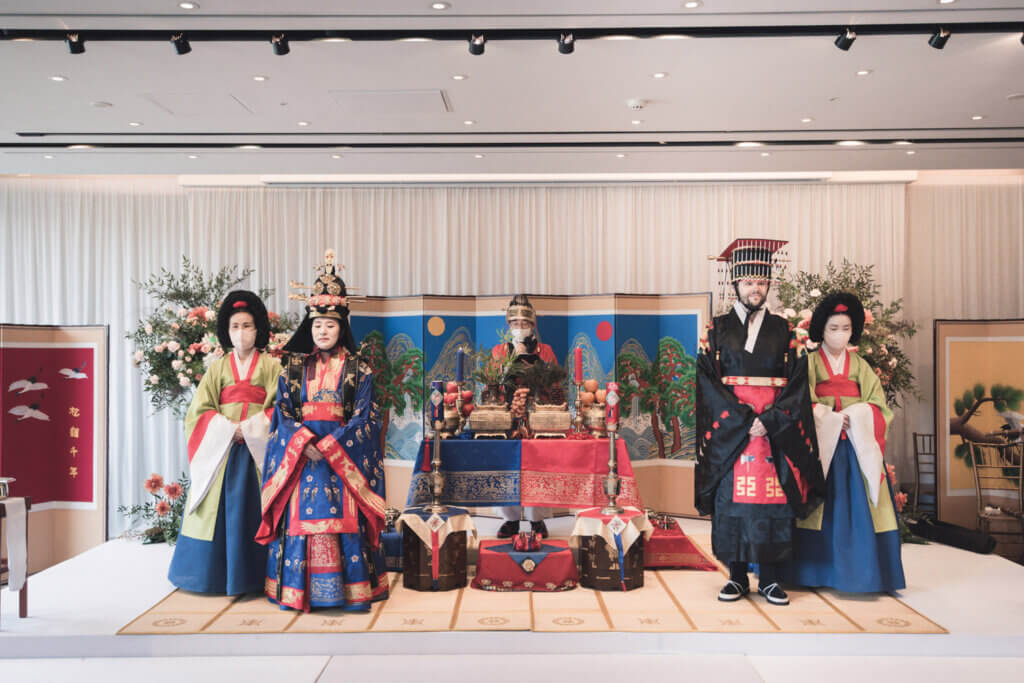the story of one couple’s journey through three weddings and a pandemic

Semmie Kim & Clay Hambrick
Manhattan, New York 5.16.20 | Alderson, West Virginia 5.15.21 |
Seoul, South Korea 10.16.21
Photographed by Jenni Grace Photography
Written by Devin Lacey
Semmie Kim and Clay Hambrick were both living in New York City and looking for their person—a partner in life to weather it all side by side. Their first date was at a speakeasy-style cocktail bar on the Lower East Side, close to where Clay lived and Semmie worked. “That was not a neighborhood I frequented,” Semmie remembers. “I lived all the way uptown. I definitely got lost trying to get there.” Clay laughs at the memory, saying, “The long subway ride was a big theme in our early relationship.”
The Proposal
After a few years of dating, discussion of marriage was becoming more serious. The ring search had barely begun when a plan came about to visit a few friends in Rome in May 2019. With such a romantic opportunity ahead of him, Clay slipped away the day before they were set to leave to purchase a “stop-gap” ring, something to have and hold until they returned to the states and Semmie could be more involved in the decision. She found out later that Clay had been carrying the ring loose in his wallet for days leading up to the proposal. “I didn’t want to be conspicuous!”

Alone on the turret of a medieval castle overlooking the stunning town of Assisi, Clay got down on one knee and proposed to a shocked Semmie. “I definitely cried,” she says. She eventually said yes.
New York
Plans for Semmie and Clay’s West Virginia wedding were nearly complete and the big day was quickly approaching when COVID-19 hit. Just weeks out from their wedding, they made the tough decision to postpone. They pushed their nuptials back exactly a year. But to complete their union in spite of the pandemic, the couple decided to go ahead and tie the knot in a non-traditional way.



Procuring a marriage license in the knick of time—just a day before the city shut down—they began planning a micro-ceremony. “We had done some scouting around the city,” Clay says. “We came across the New York Public Library in midtown Manhattan and decided that, since it was closed, we’d have the ceremony right on the steps.”
West Virginia
Semmie and Clay planned their “very bare bones” New York ceremony themselves but, when it comes to their two bigger gatherings, they place the credit with those who earned it: their moms. “They did most of the planning of both big weddings,” Clay says.
After a year of quarantines, vaccinations, and a lot of uncertainty, the pair were back in the home stretch for their big West Virginia wedding near Alderson at Fairhill, a stone farmhouse built in 1795 by a very great-grandfather of Clay’s. When the day finally arrived, announced by a trumpet call, Semmie made her way down the aisle, and the ceremony began.





Standing on the hill at Fairhill, watching Semmie come up the road in a horse-drawn, open-top landau, Clay had the sudden realization: It was finally here, the moment that should have happened a year ago, unfolding in front of him. “It was one of the first social things we all got to do since the pandemic,” Semmie says, looking back. Clay agrees. “We got to see all the people from all the different parts of our lives together.”
An informal after-party made the evening feel intimate. Ginny’s Food Truck supplied mouth-watering late-night snacks, and a firepit provided the perfect sweet treat for a West Virginia night: s’mores. The newlyweds didn’t have to look far for entertainment: Clay picked up his violin and joined Kyoung Kim, Semmie’s father, in an impromptu concert that delighted guests as they basked in the joy of wedded union and the great West Virginia outdoors.
Seoul
Semmie and Clay’s third and final wedding found them jetting off to Seoul for a traditional-style Korean ceremony at the Westin Josun Hotel.
The ceremony was planned by Semmie’s parents, consisting of several traditional Korean performances: a song on the gayageum—a Korean string instrument; a fan dance; and a vocal song called a chang. The couple wore custom-made silk hanboks with embroidered silk robes and large traditional headpieces. “Our family was very helpful in planning and getting things together,” Semmie says, which took some of the stress off of planning a third and international wedding.
The ceremony also included what would become a favorite moment for the couple: a separate ceremony called a paebaek. This was a celebration of the marriage limited to the newlyweds and their parents to formally welcome the bride into the groom’s family. The private ritual gave the couple an opportunity to breathe, basking in the culmination of moments and planning years in the making.






